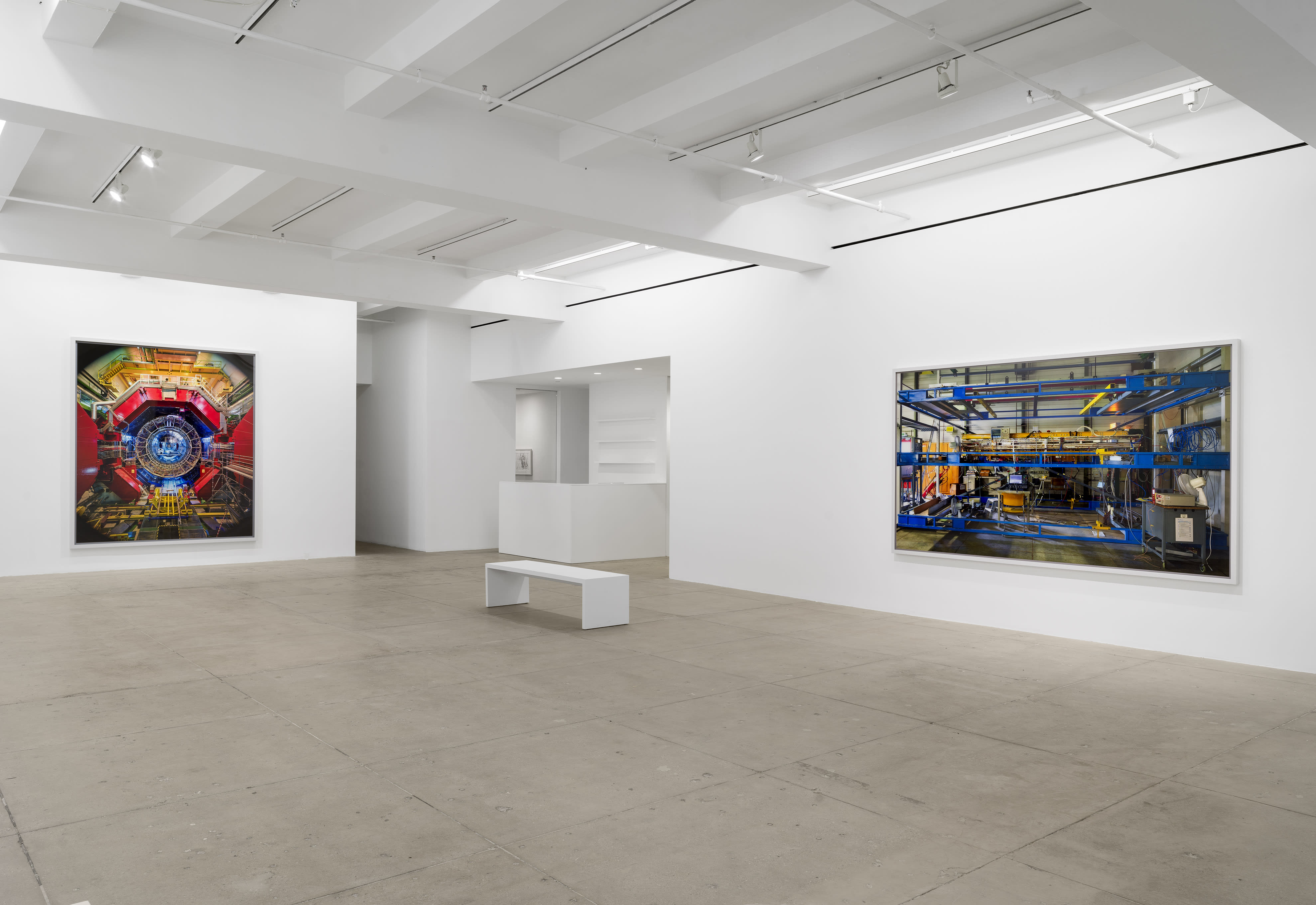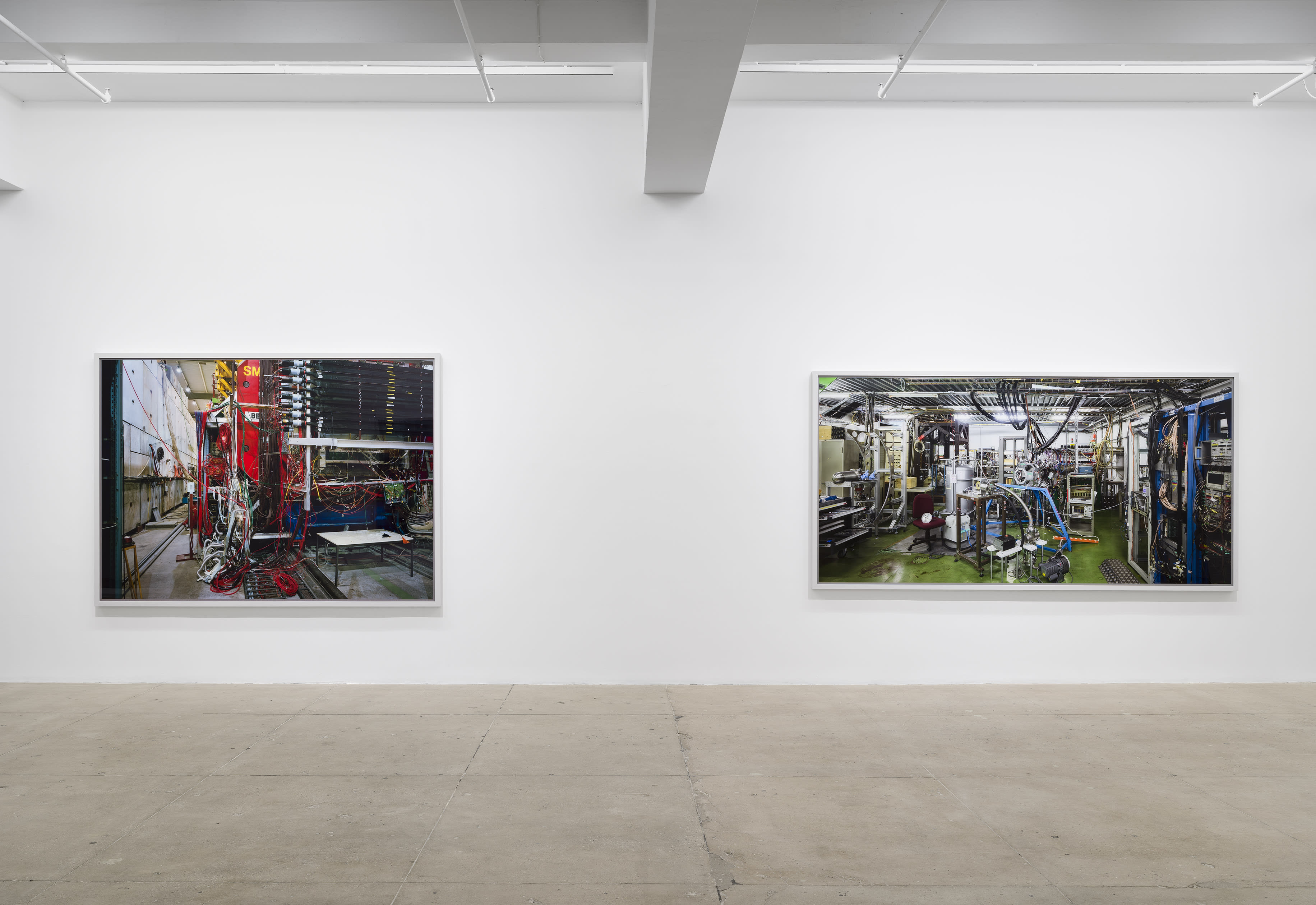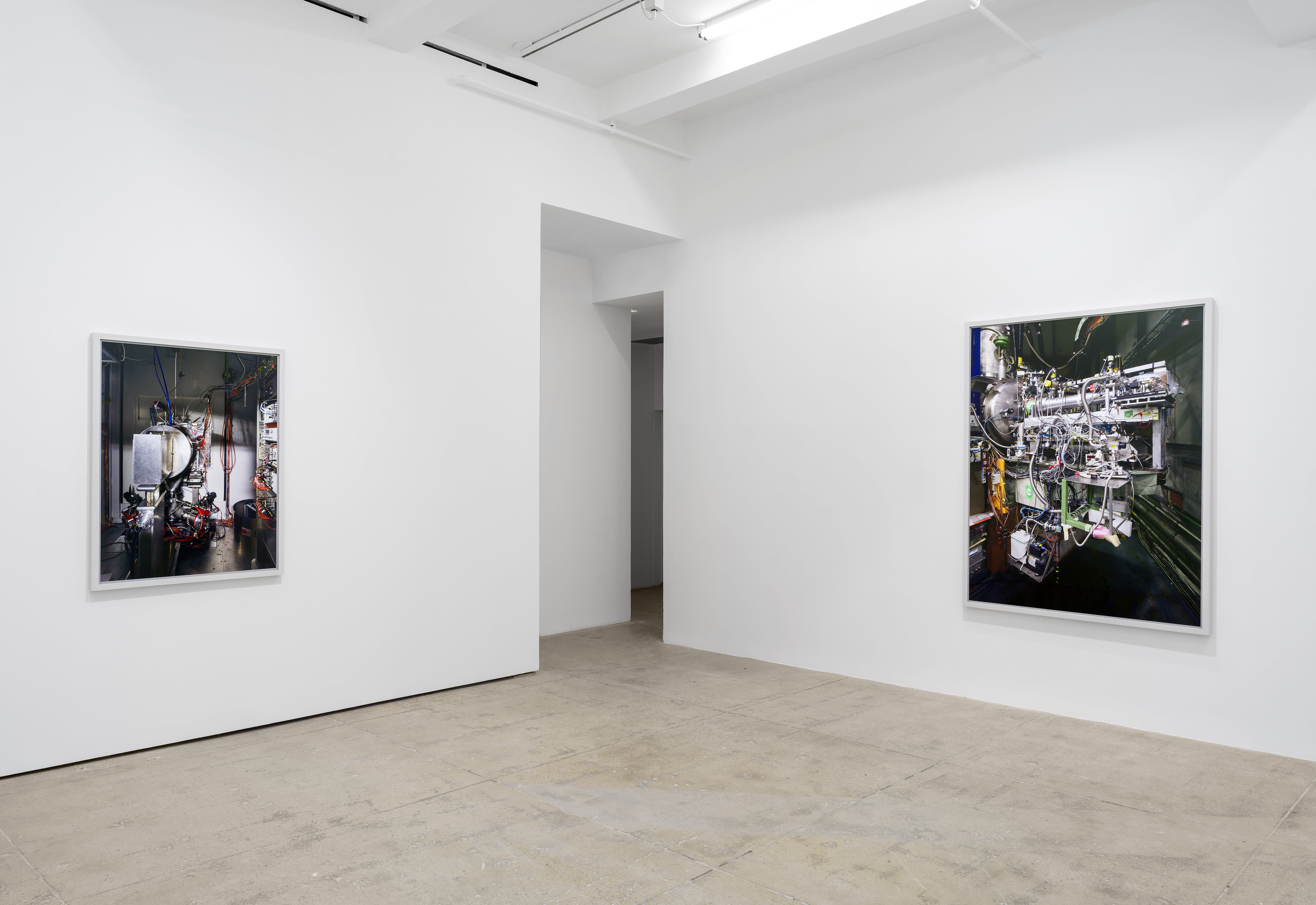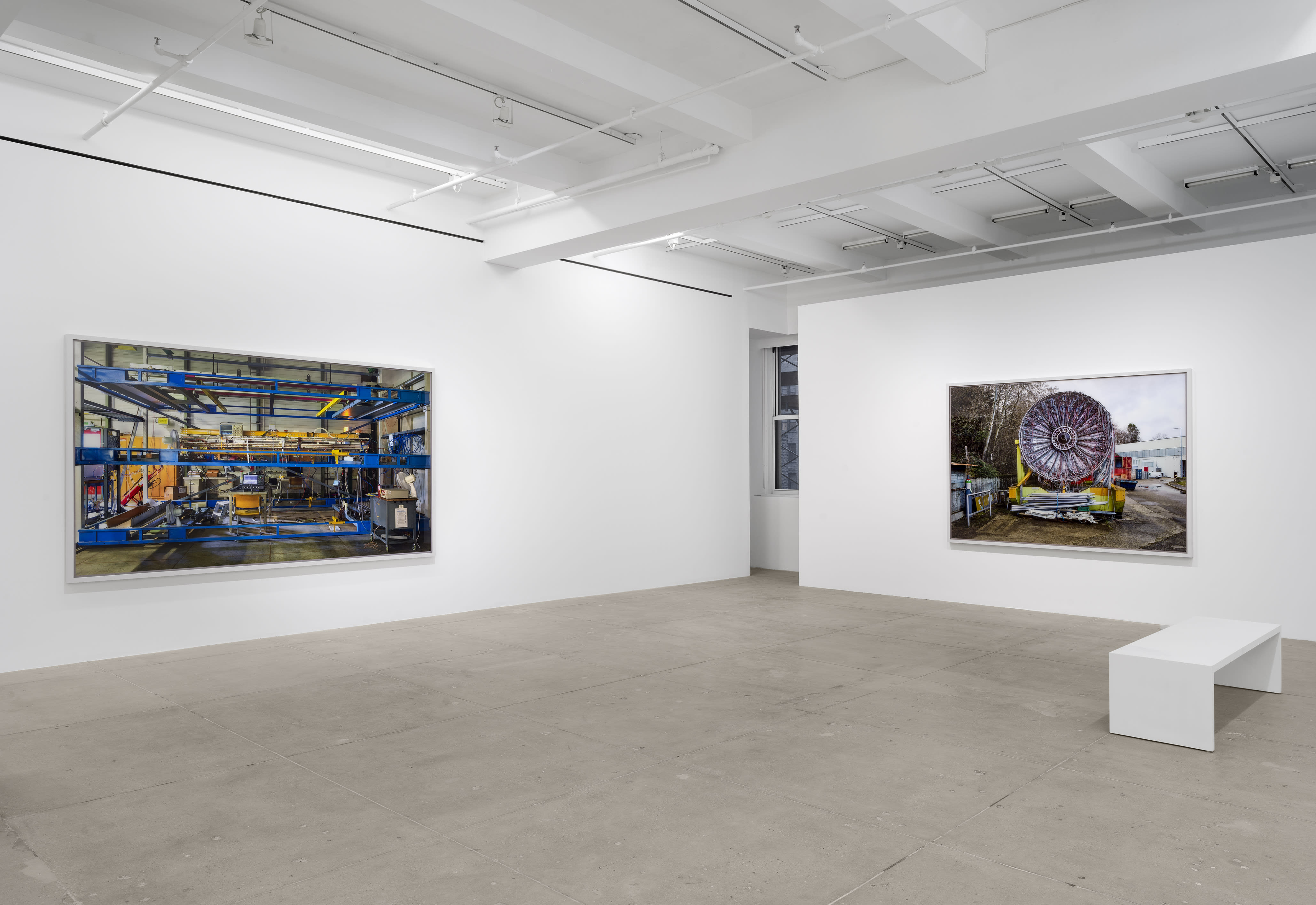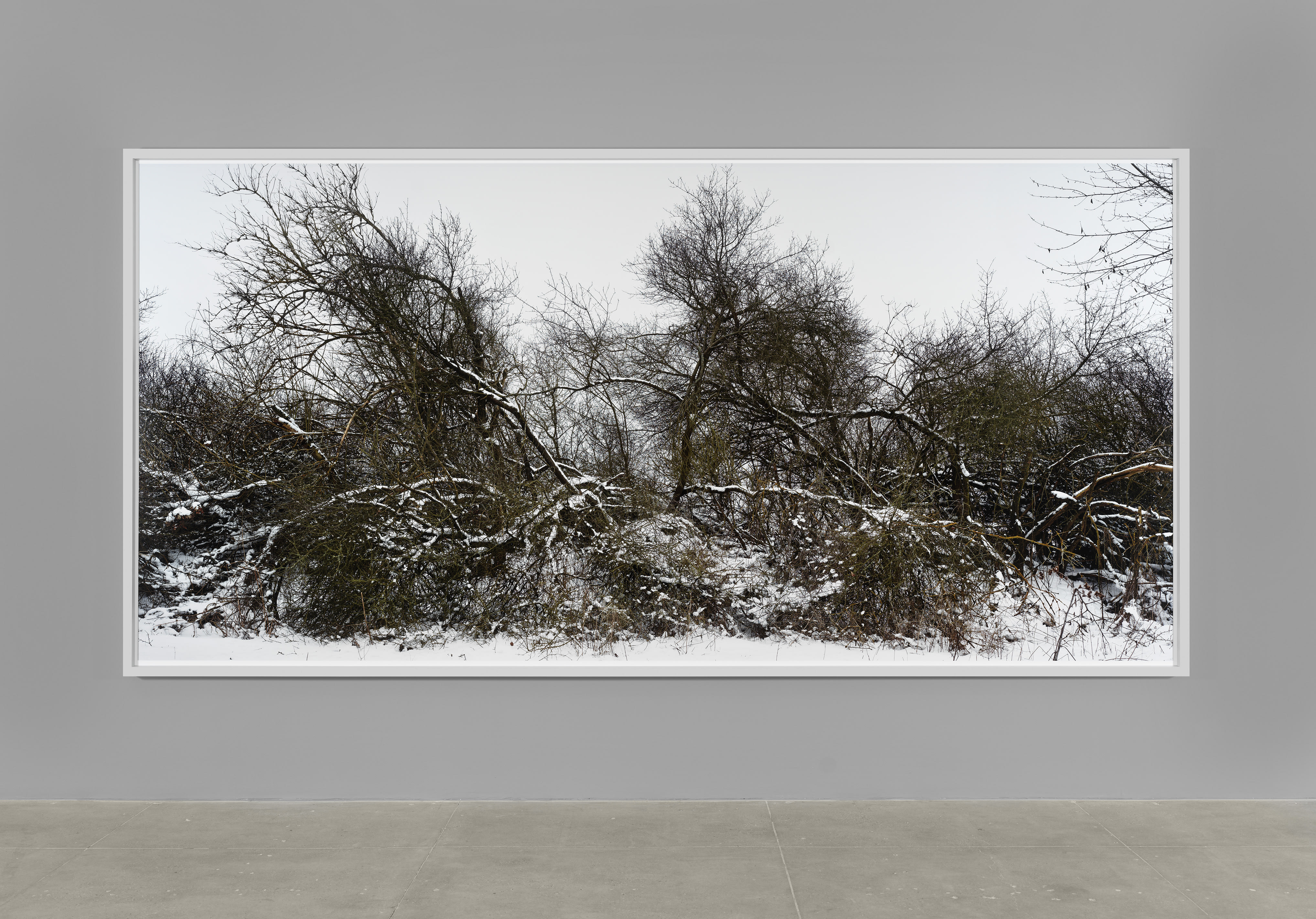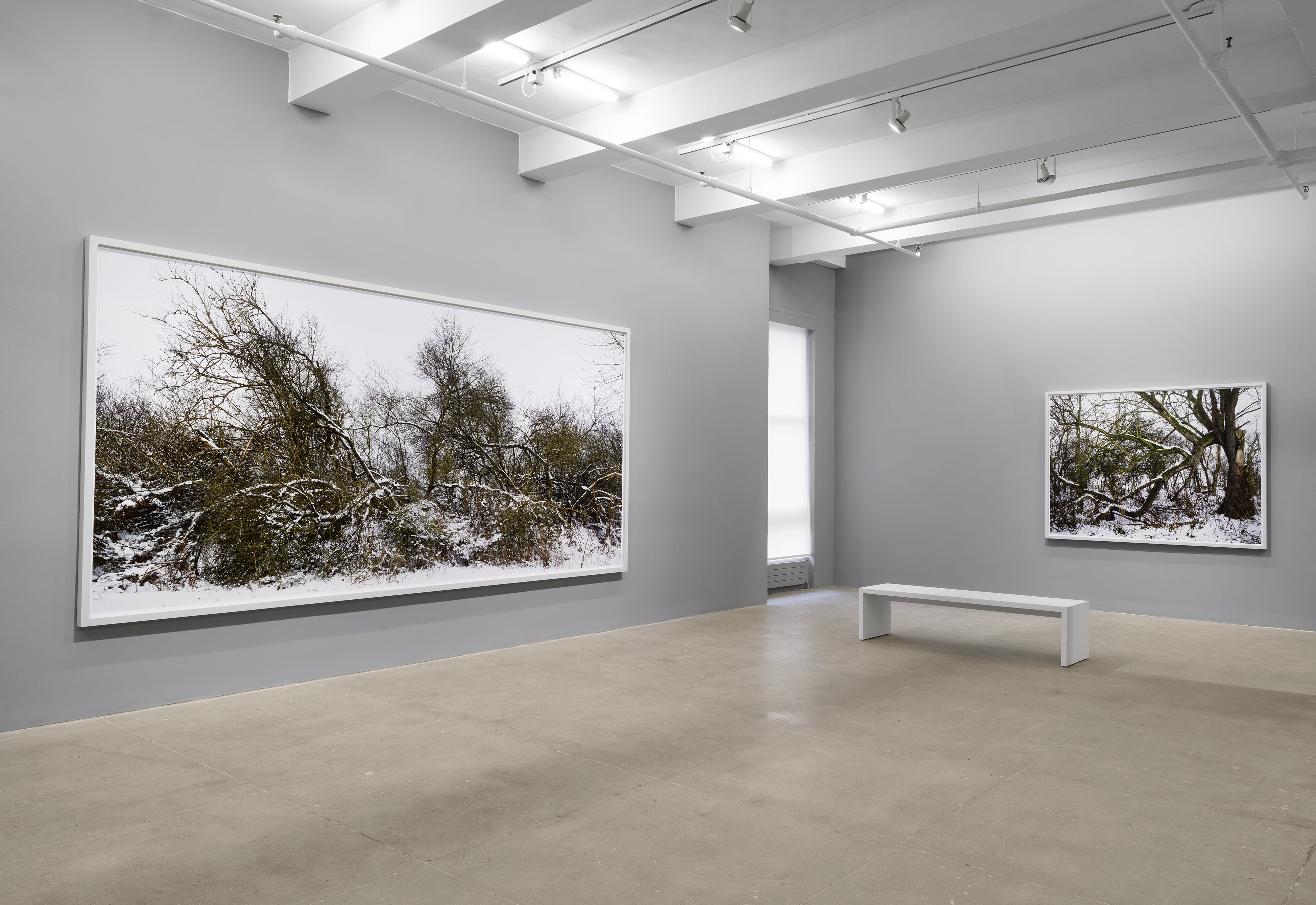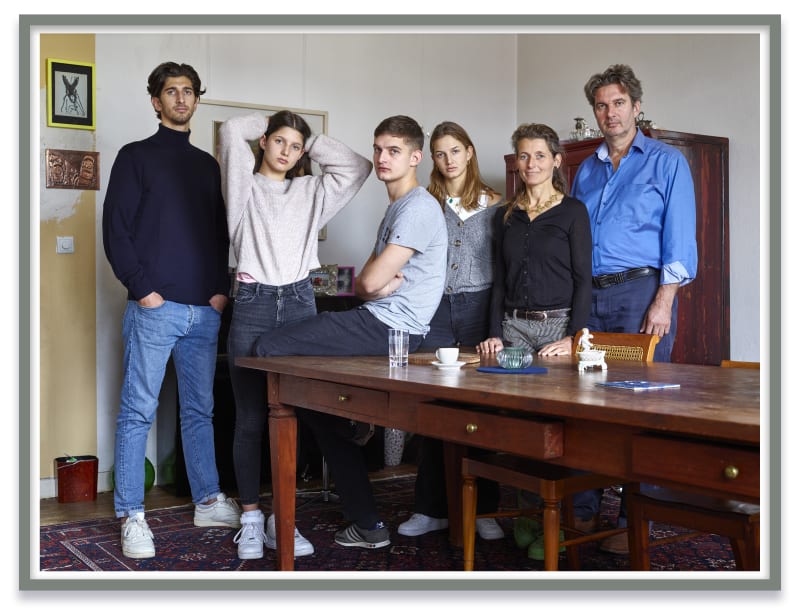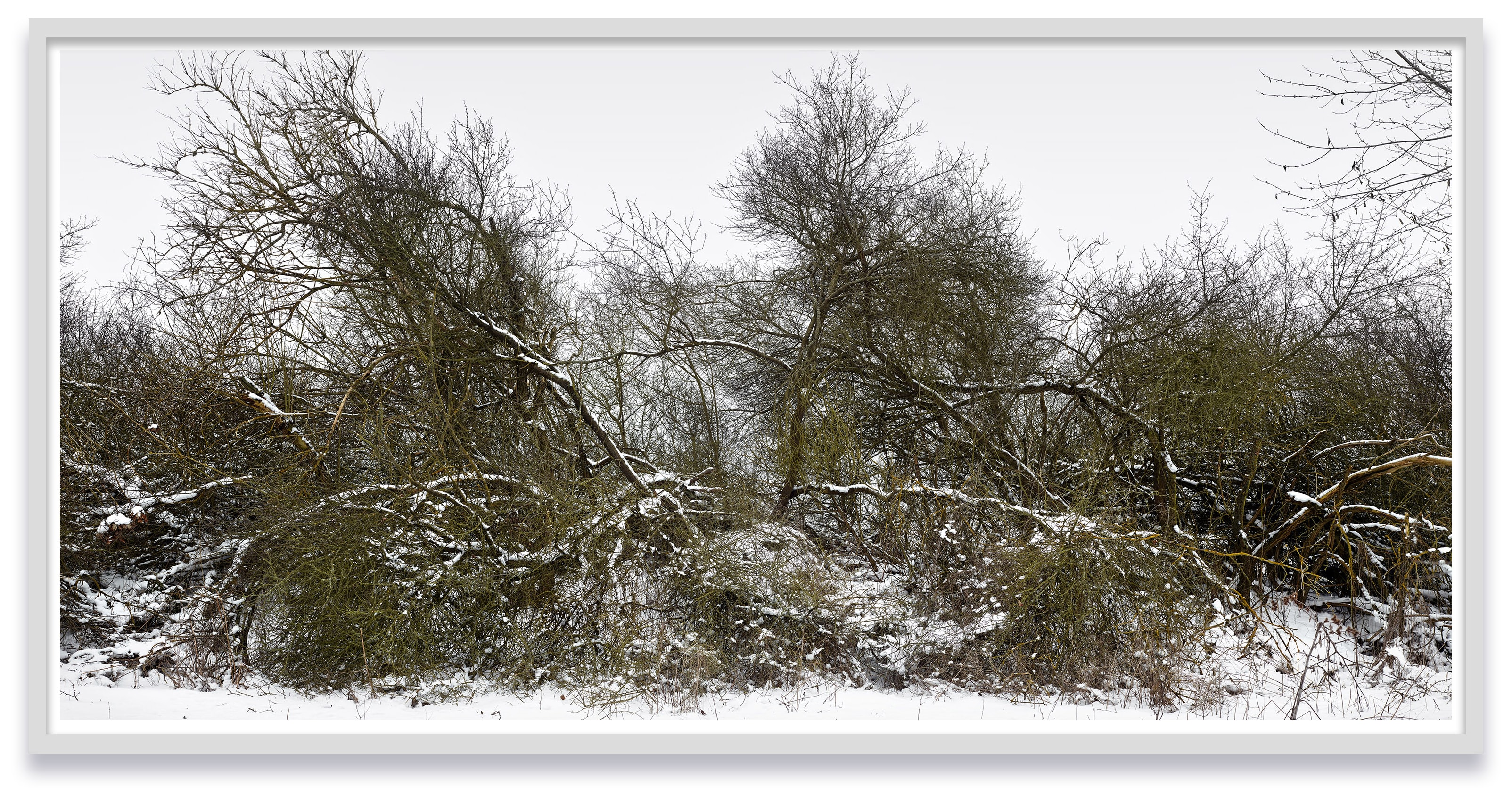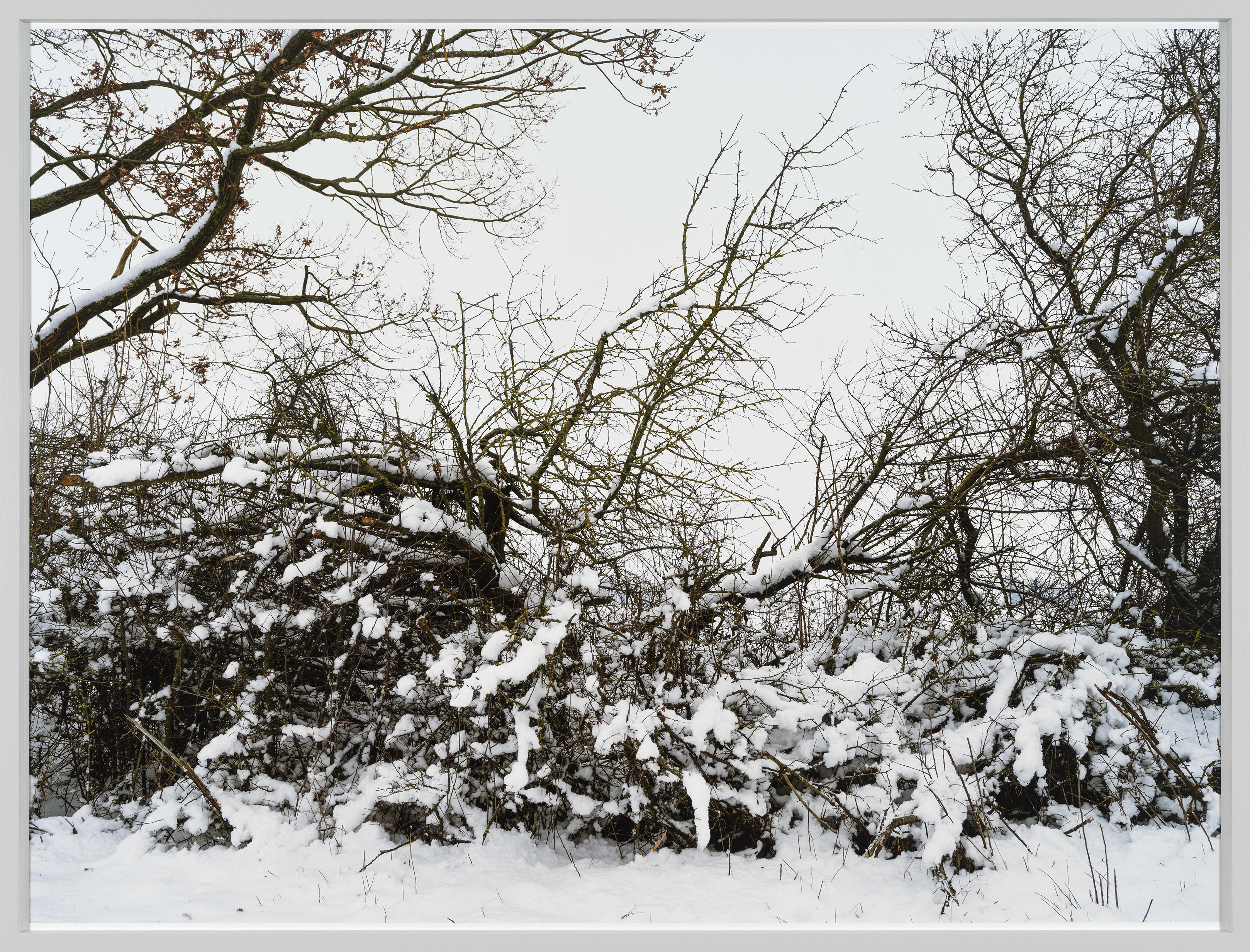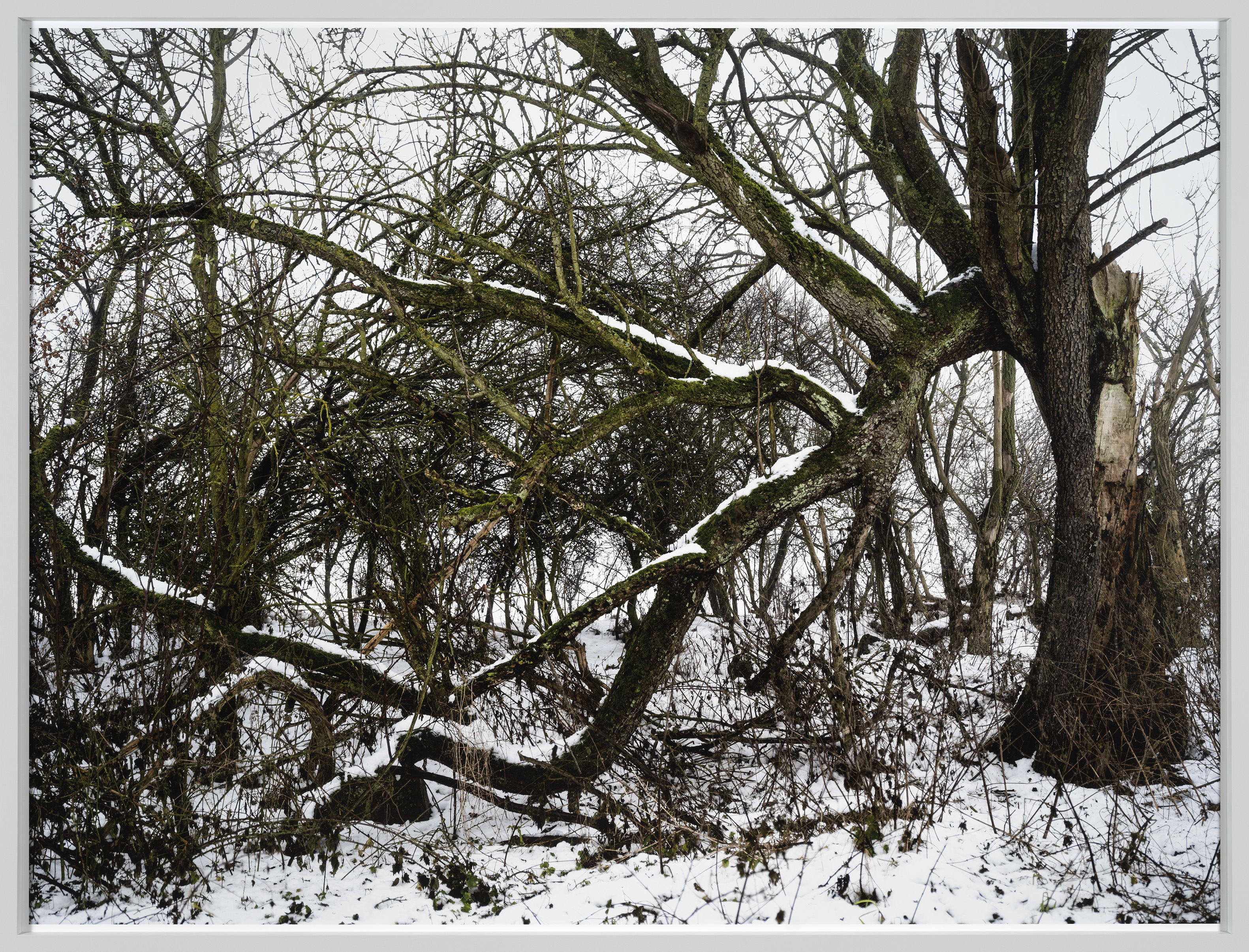Thomas Struth
Thomas Struth
15 March - 23 April 2022
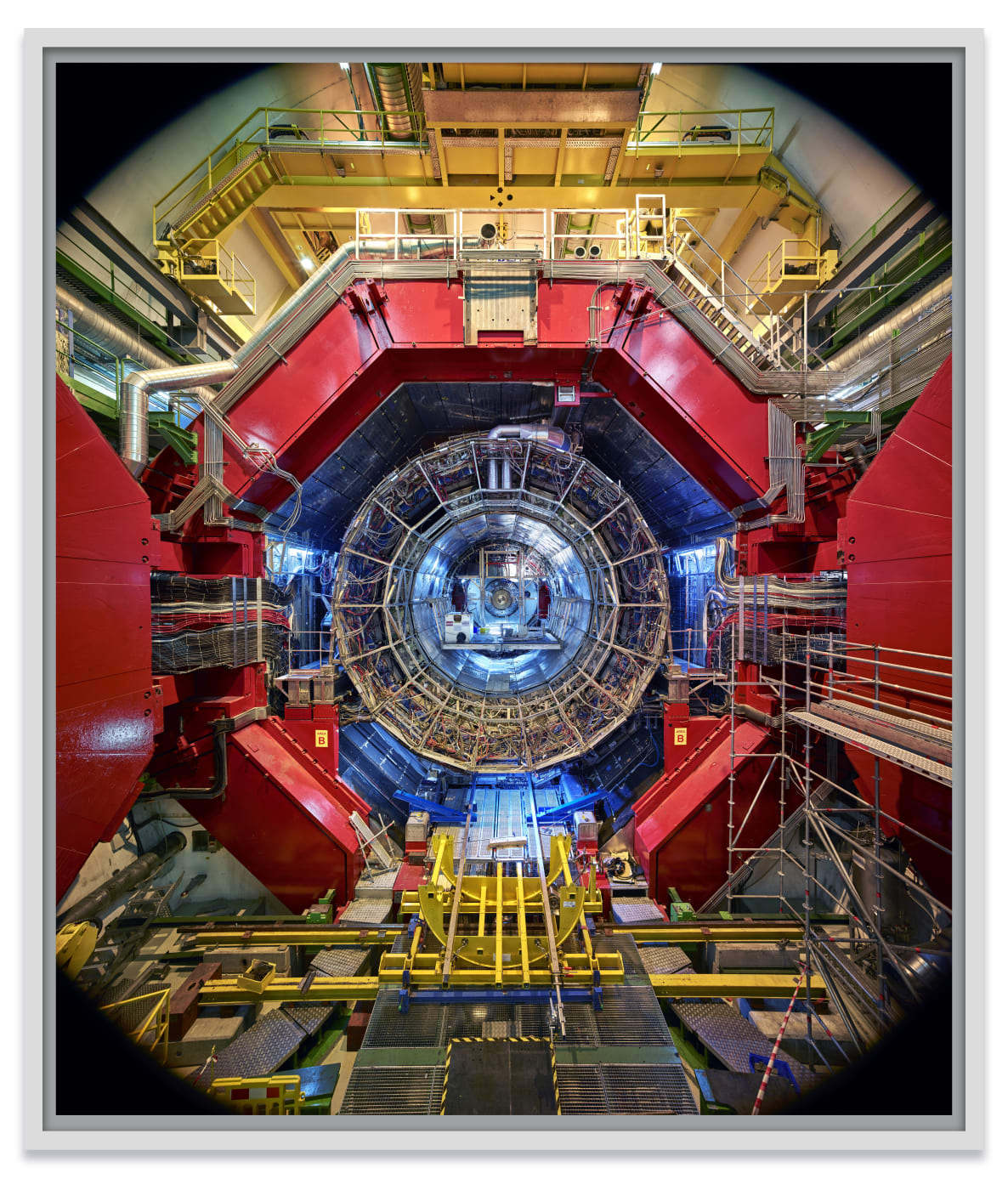
Frame: 111 3/4 x 95 5/8 x 2 3/4 in. (283.8 x 243 x 7 cm)
Marian Goodman Gallery is delighted to announce an exhibition of new work by Thomas Struth. The exhibition will present recent works created over the past two years from his ongoing series Nature and Politics and Family Portraits.
The presentation will highlight new photographs from his investigation into science, technology and industry, created at the scientific institute CERN in Switzerland. These works will be presented in relation to new portraits and landscape photographs. Bringing together disparate themes, Thomas Struth reflects on our contemporary condition and the interrelationships between technology, people, and nature.
Since 2019, a few years after meeting CERN particle physicist Dr. James Beacham, Struth has developed a large cluster of works that explores the technological environments at the world’s largest scientific research center. These photographs, on display in the North Gallery, depict various scientific set-ups and high-tech machinery employed towards the study of the structure of the universe, ranging from the ALICE detector to cosmic ray testing devices, and more.

Frame: 40 3/8 x 50 5/8 x 1 3/4 in. (102.6 x 128.6 x 4.4 cm)
Mediating between the North and South Gallery are new Family Portraits, a continuation of the series driven by Struth’s psychological interest in interfamilial relations since the late 1980s. Recently, Struth has resumed photographing families, tracing how distinct families compose themselves and constitute in their formation an identity as a social unit within the backdrop of our new reality of social distancing.
“I think that I was always fascinated by family construction and by the constitution of identity. Once you try to look with a bit more distance, the three constituting elements of life are the family, the cultural environment in which one is born, and the historical time.”
“I ask people to sit however they want to sit, or stand. Its part of the system that inevitably people sit or position themselves according to the dynamic of the moment and whoever they want to be close to… it represents the dynamic of the moment in the group.”
Thomas Struth, as interviewed in Foto 8, 2008
The panoramic landscape Schlichter Weg, Feldberger Seenlandscahft, 2021, a photograph initiated in Germany during the pandemic, occupies a central position in the South Gallery. This monumental 4.5- meter work was shot in January 2021 near Struth’s country house and will be accompanied by related landscape works. The photograph shows a snow-covered landscape with several trees and shrubs in an ambiguous state between hibernation and decay.

Thomas Struth
X-ray Telescope, CAST, CERN, Ferney-Voltaire 2021, 2021
Inkjet print
Image: 66 1/2 x 52 in. (169 x 132 cm)
Frame: 71 1/2 x 55 1/4 x 1 7/8 in. (181.6 x 140.3 x 4.8 cm)
Edition of 6 (#3/6)

Thomas Struth
Ion Source, PSB, CERN, Meyrin 2019, 2019
Inkjet print
Image: 47 x 34 7/8 in. (119.3 x 88.5 cm)
Frame: 50 1/8 x 38 x 1 3/4 in. (127.3 x 96.5 x 4.5 cm)
Edition of 6 (#3/6)
Struth explores the construction of the built environment and authenticity in his vast urban landscapes. His fascination with metaphors of human progress and questions regarding human achievement are explored within the context of the representation of science, industry and technology. Since 2007, these formally elegant pictures contain all-over compositions which are almost sculptural in their depictions. Inquiries into unseen backdrops of our contemporary reality, they represent hidden truths within the contours of space flight, industrial, nuclear and energy production, medical research, turbine halls, A.I., robotics, particle physics, and more recently, inquiries into conservation and the adaptability of wildlife.
Struth is interested in photographing “places which are at the crossroads of technology and ambition, where the limits of what is possible are continually being tested.”

Archive, Matrix, Assembly: The Photography of Thomas Struth, a comprehensive publication on the artist’s work, was published by Applied Research & Design in 2021. Presenting an evolutionary understanding of the work, the author Nana Last proposes three stages of Struth’s production through ideas on the archive, matrix, and assembly. A conversation between the artist and the author will take place on Tuesday, 21 March at 6:30 pm at the Harvard Graduate School of Design, and a presentation on her recent publication will take place at University of Virginia, Charlottesville, this spring.
BUY NOW

Thomas Struth (born 1954 in Geldern) lives and works in Berlin. Struth studied at the Kunstakademie, Düsseldorf. Recent comprehensive exhibitions of Struth's work include the major touring exhibition Figure Ground, the largest comprehensive survey show to date which included archival material, and was shown at Haus der Kunst, Munich, Germany and traveled to the Guggenheim Museum, Bilbao, Spain (2017-2019) as well as Thomas Struth: Nature & Politics, exhibited at the Museum Folkwang, Essen, Germany; the Martin- Gropius-Bau, Berlin, Germany, the High Museum, Atlanta, Georgia; the Moody Center for the Arts, Houston, Texas; the St. Louis Museum of Art, Missouri and the MAST Foundation Bologna, Italy (2016- 2019).
Other recent exhibitions have been shown at Hilti Art Foundation, Vaduz, Lichtenstein (2019); Aspen Museum of Art, Colorado (2018); the Metropolitan Museum of Art, New York (2014); and a major retrospective which traveled from the Kunsthaus Zurich, Switzerland to Museu Serralves, Portugal, the K20 Kunstsammlung Nordrhein-Westfalen, Düsseldorf, and the Whitechapel Gallery, London. (2010-2012). In 2018, Struth received the Honorary Magister Artium Gandensis from the Royal Academy of Fine Arts (KASK), Ghent, Belgium. In 2016 he was elected Foreign Honorary Member of the American Academy of Arts and Letters and received the Centenary Medal and Honorary Membership from The Royal Photographic Society, London. In 2014 he was awarded an Honorary Fellowship by the Royal Institute of British Architects. He is the winner of the Spectrum-International Prize for Photography of the Foundation of Lower Saxony (1997) and the Werner Mantz Prize for Photography, The Netherlands (1992). He has participated in numerous international group exhibitions including Common Ground, Venice Architecture Biennale (2012), Future Dimension, the Venice Biennial (1990) and Documenta IX (1992).
Please join us at the opening reception for the artist on Tuesday 15 March from 6-8 pm. For further information, please visit our website at mariangoodman.com, and or contact the gallery at: 212 977 7160.
